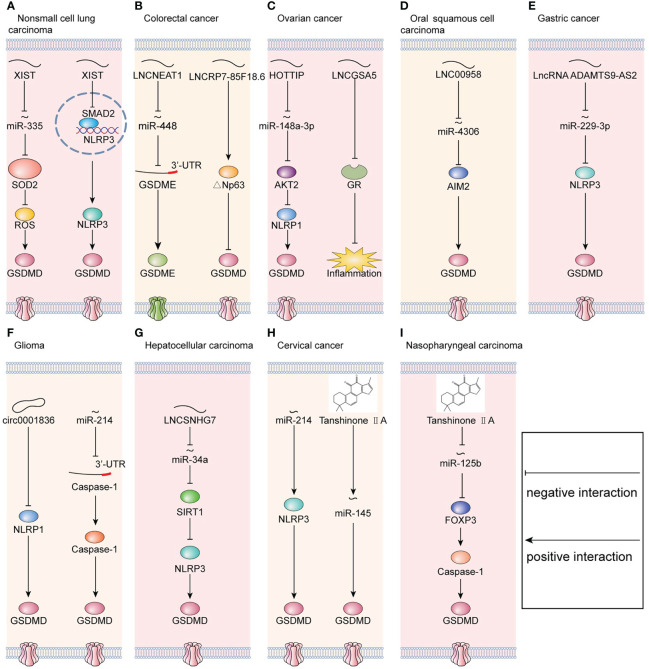Figure 1.
Molecular mechanisms that regulate pyroptosis in cancers. (A) In non-small cell lung carcinoma, LNCXIST regulates pyroptosis via the miR-335/SOD2 axis and SMAD2/NLRP3 axis simultaneously. (B) In colorectal cancer, LNCNEAT1 regulates pyroptosis via the miR-448/GSDME axis, and LNCRP7-85F18.6 regulates pyroptosis via △Np63. (C) In ovarian cancer, LNCHOTTIP regulates pyroptosis via the miR-148a-3p/AKT2/NLRP1 axis. Meanwhile, LNCGSA5 interferes with glucocorticoid receptor (GR), which blocks the upregulation of anti-inflammatory proteins and eventually promotes inflammasome formation. (D) In oral squamous cell carcinoma, LNC00958 regulates pyroptosis via the miR-4306/AIM2 axis. (E) In gastric cancer, LncRNA ADAMTS9-AS2 regulates pyroptosis via the miR-229-3p/NLRP3 axis. (F) In glioma, downregulation of circ0001836 promotes pyroptosis via epigenetically upregulating NLRP1. Meanwhile, miR-214 directly binds to the 3’-UTR of caspase-1 and consequently inhibits pyroptosis. (G) In hepatocellular carcinoma, LNCSNHG7 regulates pyroptosis via the miR-34a/SIRT1 axis. (H) In cervical cancer, miR-214 regulates pyroptosis via targeting to NLRP3. Moreover, tanshinone IIA promotes pyroptosis via upregulating miR-145. (I) In nasopharyngeal carcinoma, tanshinone IIA regulates pyroptosis via the miR-125b/FOXP3 axis.

